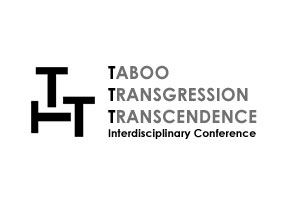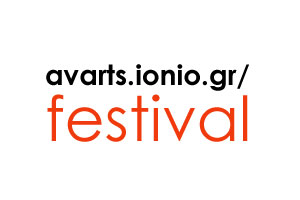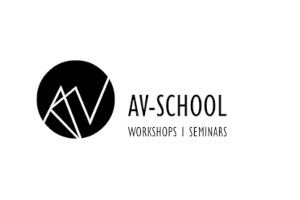This paper presents the interactive audiovisual installation “Hyper Kafka: Rooms of Memory”, which took place in the Library Amphitheater of the Faculty of Philosophy of the University of Athens (UoA) in December 2024, as the result of the collaboration between the Department of Audio & Visual Arts of the Ionian University and the Department of German Language and Literature of the UoA in the context of the “Kafka Year 2024” celebrations. Selected artworks of hypertext fiction created by students of the Pedagogical and Didactical Sufficiency Program (PDSP) of the Department of Audio and Visual Arts aimed to reflect, interpret, and highlight themes and nuances of the Kafkaesque literary universe through a web of virtual spaces, connected by non-linear pathways, which visitors could explore with a mouse on a desk in the center of the dark room. The desk was decorated with pictures of Kafka’s personal drawings and other relevant documents, and subtly, yet directionally lit by an old-fashioned lamp to enhance visitors’ immersion in the installation’s narrative space. The artworks were projected on the wall and played back through speakers aiming to foster the social aspect of the installation and engage the audience in the activity run by the person in control.
Hypertext Fiction is regarded as a subset of Interactive Digital Narratives based on textual nodes and navigational links [1]. The artworks were created as the students’ final assignments for the course “Curriculum Augmentation Technologies” delivered by the authors, who have analyzed their methodological approach in a previous publication [2]. In this paper, the authors briefly present the artworks themselves aiming to demonstrate one of the core aspects of their approach, i.e. the coexistence and interaction of different perspectives in a dynamic, dialectic environment. Then, they discuss the design specifications and challenges pertaining to the installation including i) the graphic design and programming of an interactive application, and ii) the props and set design for the scenographic preparation of the installation space.
The interactive application consists of two main parts. The first part provides access to the hypertext fiction artworks, along with information about the installation and its contributors. The second part showcases the selected artworks. Both parts are developed using web technologies to enhance usability and provide an application template that students can easily use to create their own artworks. The graphic design for the UX/UI of the first part of the interactive application was developed to enhance user immersion, ensuring a seamless and intuitive navigation experience within the hypertext fiction environment. The design embraced a literary feel with a dark aesthetic, incorporating a 3D environment to offer the audience a glimpse into the chaotic, minimal, and symbolized immersive experience that unfolded throughout the installation. The graphic design of the second part, used as the template for the artworks, is based on the concept of a walled space—representing rooms, sections of a tower, or a labyrinth—featuring 'doors' that allow users to navigate the stories. This concept inspired the title “Rooms of Memory”.
Three postgraduate students of the Department of German Language and Literature were recruited to evaluate the installation through a questionnaire and a semi-structured discussion. The participants were first given one hour to visit the installation and browse through the virtual artworks at will. Then they were asked to fill in a short questionnaire comprised of seven statements to be evaluated through a 7-point Likert scale. The authors conducted this questionnaire to gather insight into the installation’s aesthetic, technical, and educational aspects, and juxtapose this data with the participants’ experience in contemporary digital arts and the literary work of Kafka. In the final phase of the research, a semi-structured discussion took place, aiming to let the participants further elaborate on their initial responses.
The discussion was transcribed and qualitatively analyzed. The results showed that, although the three participants were middle-aged and lacking familiarity with hypertext fiction and human-computer interaction, they were impressed by the installation. They emphasized that the artworks succeeded in capturing Kafka’s absurdity, the technical execution was well-made, and the configuration of the space helped to create an immersive atmosphere. The authors are aware that the sample of three participants is very limited and thus can only imply some preliminary notions to be tested in the future. Nevertheless, it can serve as an inspiring testimony that hypertext fiction, both as interactive medium and aesthetic outcome, is timely relevant and can incorporate learning environments for the study and dissemination of literary subjects.
Vasileios Komianos is an Assistant Professor at the Department of Audio & Visual Arts, Ionian University. He received his B.Sc. in Informatics and Telecommunications from the Department of Technology of Informatics and Telecommunications, Technological Educational Institute of Epirus, Greece. In 2013, he received his M.Sc. in Informatics, in the subject area of information systems, from the Department of Informatics, Ionian University, Greece, and in 2017 his PhD in Digital Cultural Heritage and Mixed Reality from the same Department. His current research interests include immersive applications (virtual/augmented/mixed reality) on arts and cultural heritage, smart tourism applications, and assistive technologies in the smart cities context.
Stavroula Stasinou is a multidisciplinary designer and researcher whose work lies at the intersection of graphic design, creative coding, and immersive media. She holds a BA in Graphic Arts and Visual Studies from the University of West Attica and an MA in Audiovisual Arts from the Ionian University. Currently working as a Creative Director and Graphic Designer at the Institute of Computer Technology and Publications "Diophantus" (CTI), she has over 12 years of experience in EU-funded research and educational projects, including Horizon and Erasmus+, with a focus on visual communication, UX/UI design, and front-end development. Her artistic and academic interests include augmented reality, net art, and interactive installations that explore the emotional and aesthetic potentials of machine-human interaction. Stavroula’s work combines a strong graphic design sensibility with contemporary technological tools to create hybrid environments that are both visually compelling and intellectually engaging. She actively shares her artistic experiments and conceptual work through her online platforms, exploring themes of identity, digital embodiment, and emotional abstraction.
Dr. Agnes Papadopoulou is Associate Professor in the Department of Audio & Visual Arts at the Ionian University of Greece. Her research and teaching activity pertains to art didactics, creative technologies, art philosophy and aesthetics, ethics and ecological thought. In her publications she is investigating the fusion of art and technology, the creation of narratives through new media, and modern approaches to learning and educational practices. She is the Scientific Director of the Pedagogical and Didactical Sufficiency Program and one of the three members of the Ionian University Teaching and Learning Center. She is also the Coordinator of the Ionian University Unit of Counseling, Psychological and Social Services and the President of the Ionian University Equity, Inclusion and Accessibility Committee.
Back





